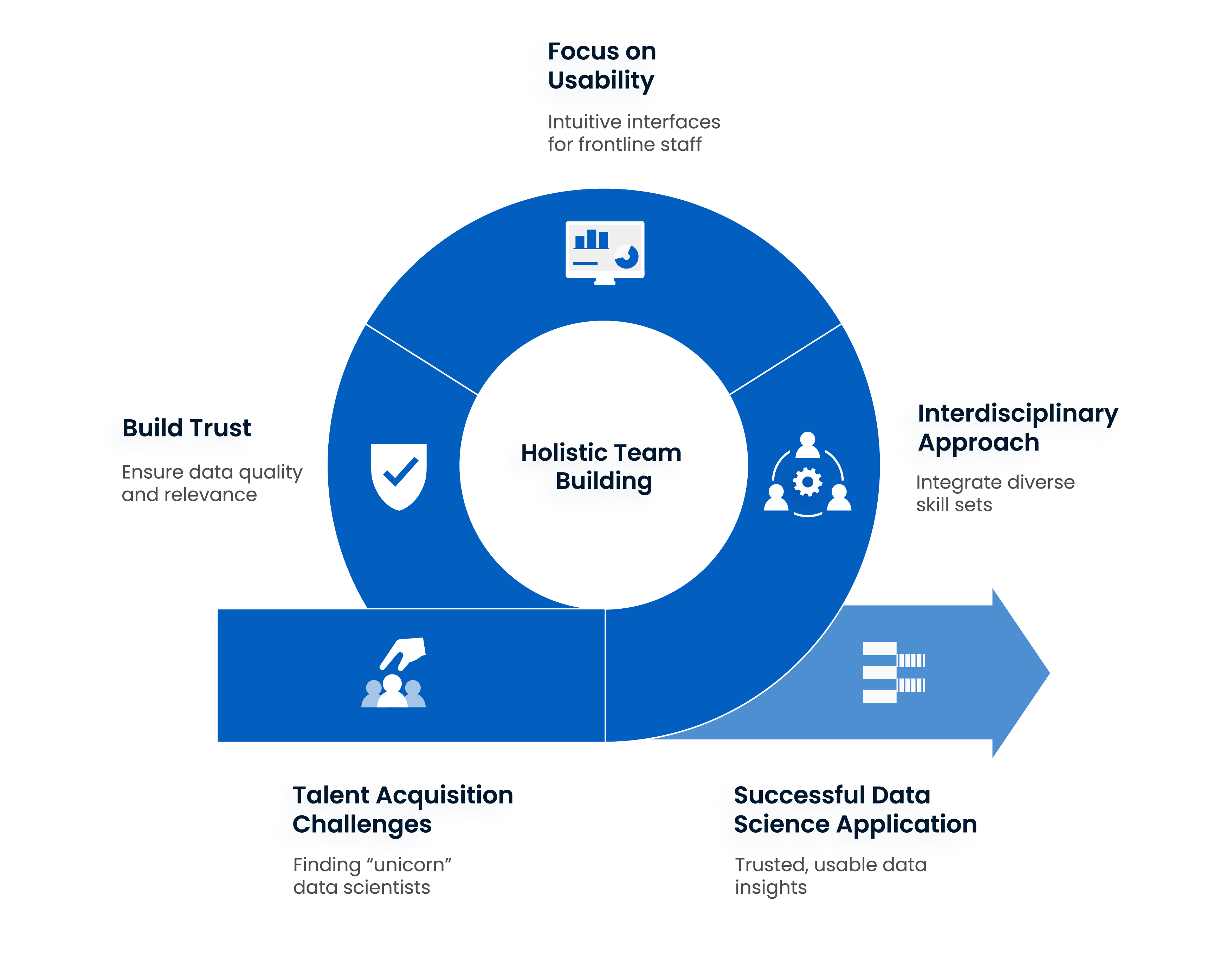Addressing the data science talent shortage in healthcare

The Challenge of Building Data Science Teams
Recruiting and retaining data science talent in healthcare isn’t easy. Organisations are looking for people who can bring together technical know-how and a solid understanding of healthcare systems. The ideal candidate is often described as a “unicorn”, someone who can code, build models, clean messy data, tell a clear story, and understand the clinical or public health context.
Unsurprisingly, that kind of person is hard to find, especially in the public health sector where budgets are tight and competition with the private sector is fierce.
Lessons from Missteps, and the Importance of UX and Trust
A number of well-funded initiatives have shown how costly it can be to jump into data science without a holistic, interdisciplinary approach. IBM’s Watson Health, once seen as a potential game-changer, struggled with integration, clinical relevance, and trust, and was eventually sold off. Premier Health in the US ran into similar problems, with poor usability and concerns about data quality undermining progress.
These examples make one thing clear. It’s not just about the algorithms or the models. If frontline staff don’t trust the data or if the user interface is clunky, even the most advanced analytics won’t gain traction.

Strategies for Building Data Science Capacity
When it comes to building capacity, most organisations consider one of three main options, summarised in the comparison table below:

Build Your Own Team (BYOT) This can seem like the most sustainable approach and may be cost-effective over time. But it requires real investment in training and support, and it can take a while before the team starts delivering results.
Bring in consultants Consultants can hit the ground running, bringing speed and deep technical expertise to a project. But they can be expensive, and once the work is done, they often move on, leaving a gap in internal capability.
Use secondments Bringing in experienced data scientists who are part of a specialised agency but seconded to your organisation basis, can offer a more balanced route. This approach balances affordability, speed, quality assurance and sustainability.
There’s no one-size-fits-all solution. What’s right depends on the scale of the work, how much support the organisation can provide, and what long-term outcomes it’s aiming for.
Invariably, the decision comes down to how the organisation wants to optimise for cost, speed and quality. But these high-level "emerging" features are the result of intrinsic properties: what is their daily rate, how quickly can a team be assembled and onboarded, how much mentorship and guidance do they need, how easily can their capacity be scaled up or down, and what is their organisational overhead?
If you want the team to deliver fast, you expect the task to be finite in duration and therefore a high upfront investment is justified, hire a group of seasoned consultants.
If you have the appetite and internal capacity and expertise to provide supervision and mentorship, you are not under a lot of time pressure to deliver and you are fine with team capacity that is not very elastic, build your own team.
If neither is really the case, you do have some time pressure to deliver, you expect to be working with the team for at least a year, you are mindful of monthly retainer costs, and you don't have much internal capacity or ability to provide supervision and mentorship, seek the secondment of a data team.
Why Organisational Change Matters
Even the most talented data scientist will struggle in a rigid environment. For data science to add real value, organisations need to create space for experimentation, support new ways of working, and encourage collaboration between technical and clinical teams.
It’s not just about hiring the right people, it’s about making sure they can do their best work, and that everyone in the organisation understands what data science can and can’t do.
Two Common Misconceptions
There are a couple of myths that still get in the way of progress.
One is the idea that healthcare data is too messy to be useful. Yes, data quality can be patchy, but it’s rarely a dead end. With the right approach, there are still valuable insights to uncover.
Another, more recent one is the over-reliance on generative AI. These tools are powerful, but they’re not a shortcut to good data science. Without clean, well-structured data and a clear understanding of the problem, even the most advanced AI can’t deliver meaningful answers.
Looking Ahead
Building data science capability in healthcare is complex, but it’s absolutely essential to improve the cost-efficiency, equality and effectiveness of healthcare systems. The organisations that get it right will be the ones that take a long-term view, invest in people, have crystal clear objectives and priorities, and build a culture where learning and collaboration are part of the organisation’s way of work.

-6.png)
-5.png)
-13.avif)